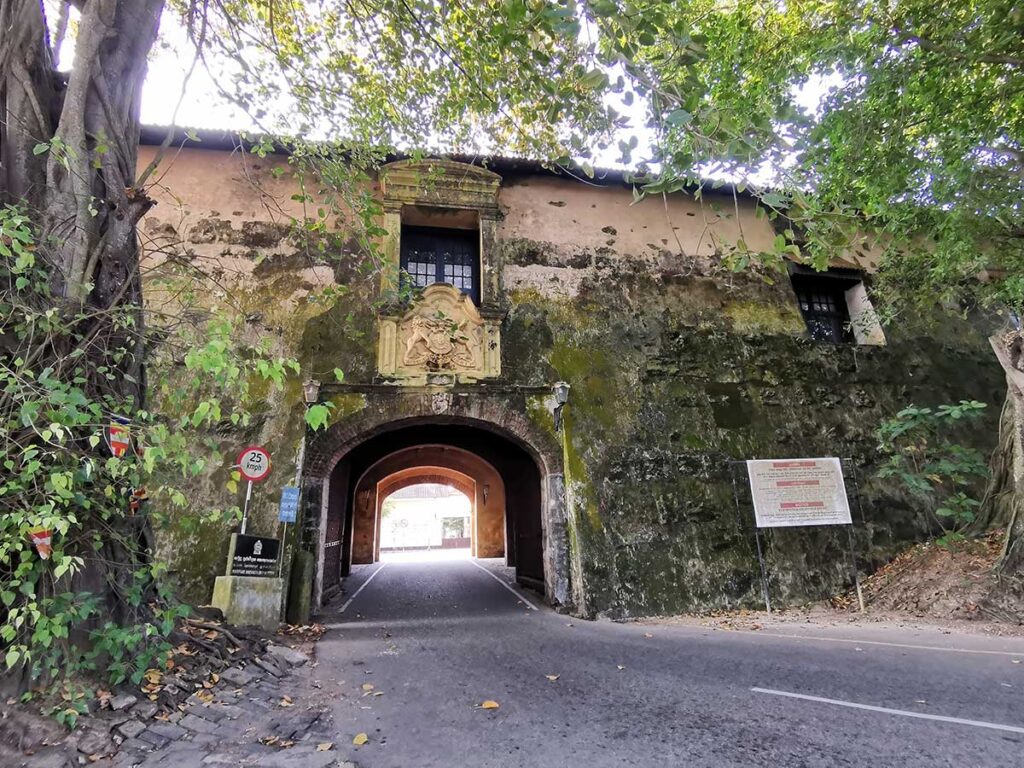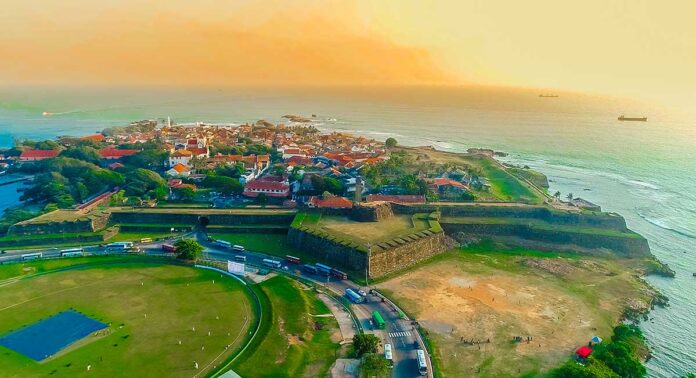Perched elegantly on the southwest coast of Sri Lanka, overlooking the Bay of Galle, stands a testament to centuries of history and cultural exchange: Galle Fort. Known locally as Galu Kotuwa in Sinhala and Kālik Kōṭṭai in Tamil, this fortification was initially constructed in 1588 by the Portuguese and later fortified by the Dutch during the 17th century. Today, it stands as a remarkable blend of European architecture and South Asian traditions, earning its place as a UNESCO World Heritage Site.
Galle Fort’s history is as diverse as its architectural influences. It served as a bustling port, connecting Sri Lanka to distant lands as early as the 2nd century CE. The Portuguese, upon their arrival in the 16th century, left their mark by building the initial fortifications and a Franciscan chapel. However, it was the Dutch who truly transformed the fort, adding extensive fortifications and infrastructure that still stand today.
The fort’s strategic significance was further highlighted during the colonial era, as it served as a stronghold for various colonial powers. The British, after capturing Galle in 1796, made their own modifications to the fort, reflecting the ever-changing tides of colonial dominance in the region.
Despite the passage of centuries and the challenges of time, Galle Fort has managed to retain its grandeur. Even the devastating Boxing Day tsunami of 2004, which wreaked havoc along the coast, could not diminish its splendor entirely. Thanks to extensive restoration efforts led by the Sri Lankan government and supported by the Netherlands, Galle Fort stands today as a shining example of preservation and heritage conservation.
Walking through the streets of Galle Fort is akin to stepping back in time. Its narrow lanes, lined with Dutch colonial-style houses, churches, mosques, and commercial buildings, evoke a sense of nostalgia for a bygone era. The fort’s layout, with its rectangular grid pattern and well-planned road network, reflects the meticulous urban planning of its European architects.
Among its many landmarks, the Dutch Reformed Church, built-in 1640 and later remodeled, stands as a symbol of the fort’s rich history. The New Orient Hotel, originally constructed in 1694 and now part of the prestigious Aman Resorts, serves as a reminder of Galle Fort’s colonial past and its transformation into a modern luxury destination.
Perhaps one of the most intriguing features of Galle Fort is its multicultural population. Over the centuries, the fort has been home to diverse communities, including Moors, Sinhalese, Dutch, English, Portuguese, and Germans. Today, it is a vibrant melting pot of artists, writers, designers, and travelers from around the world, adding to its charm and allure.
As Galle Fort continues to enchant visitors with its timeless beauty and historical significance, efforts to preserve and protect this cultural treasure must remain steadfast. The collaboration between local authorities, international partners, and the community ensures that future generations can continue to marvel at the magnificence of Galle Fort, a living testament to the enduring legacy of human creativity and resilience.








